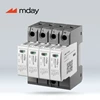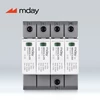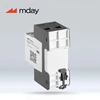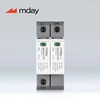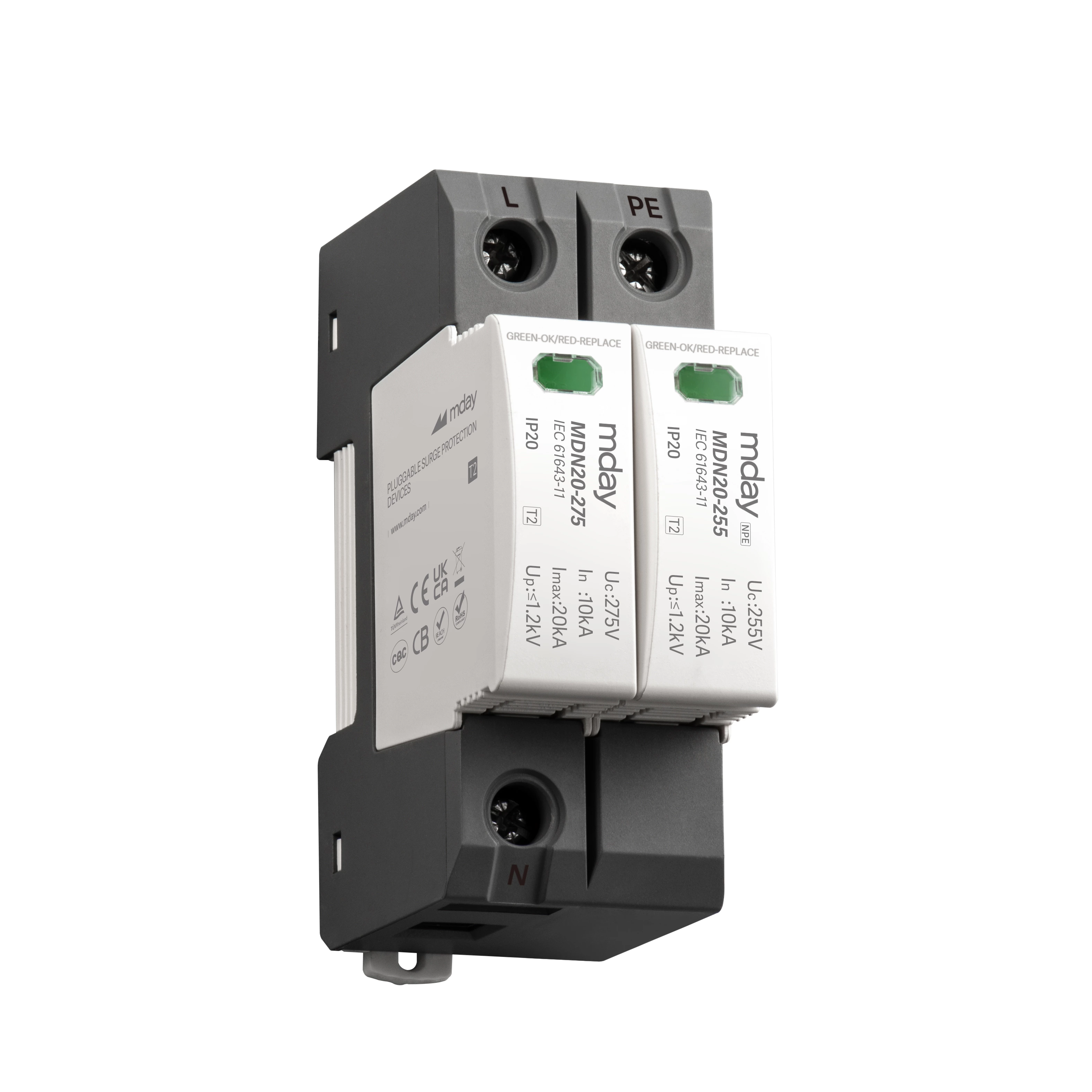Selection Of Lightning Surge Protectors In Special Situations
The electrical and electronic systems in buildings are very sensitive to transient, high-energy surges caused by lightning discharges. In order to effectively protect various electrical information systems from lightning, the space to be protected is divided into different lightning protection zones according to the various lightning protection measures (such as LPS, electromagnetic shielding and SPD) of the building. So what should be paid attention to when selecting lightning surge protectors?
1. From the main distribution cabinet of the building to the outdoor lighting distribution box, if the main distribution cabinet in the building has been equipped with a first-level (or second-level) surge protection device, should the surge protective device configured for this outdoor distribution box be selected as a first-level or a second-level one?
Answer: The above situation depends on whether the cable is overhead and buried, shielded, and whether the distribution box is within the direct lightning protection range.
1. When the cable is led out to the lighting distribution box, the lighting box needs to be equipped with a first-level lightning surge protector (Iimp: 12.5kA, Up<2.5kV, 10/350us), and a backup protector SCB is added to the front end of the SPD;
2. When the cable is led out to the lighting distribution box, and the lighting box is within the direct lightning protection range, the lighting box can be equipped with a second-level lightning surge protector (Imax: 40KA, Up<1.8kV, 8/20us), and the front end of the SPD can be added with SSB; when the cable is buried and led out to the lighting distribution box through a pipe, the lighting box can be equipped with a second-level SPD (Imax: 40KA, Up<1.8kV, 8/20us), and the front end of the SPD can be added with SSD.
2. In the same building, if the building has been equipped with a first-level (or second-level) surge protector, then when the cable is led out of the building and then introduced into the distribution box, does it need to be equipped with a surge protector? If so, how should it be installed?
Answer: The above situations require the installation of surge protectors, and comprehensive considerations must be made based on the number of local thunderstorm days, the surrounding natural environment, and the distance from overhead lines. The specific levels are divided into two situations:
1. If the cable is led out and introduced in overhead, the distribution box needs to be installed with a level 1 lightning surge protector, select the SPD surge protector (Iimp: 12.5kA, Up<2.5kV10/350us,), and add SSD to the front end of the SPD;
2. If the cable is led out and introduced underground, the introduced distribution box can be installed with a lightning surge protector (Imax: 40KA, Up<1.8kV, 8/20us), and add SSD to the front end of the SPD;
3. If it is a distribution lighting system that is led out and introduced into a building, when the underground pipe is used before entering the building for more than 20 meters (not laid in a trench), it can be configured according to the third level lightning surge protector (Imax: 20KA, 8/20us ), add SSD to the front end of SPD; if it is a thunderstorm area, you still need to choose a 2nd level SPD (Imax: 40KA, Up < 1.8kV, 8/20us), add SSD to the front end of SPD.
Selection principles of lightning surge protectors for the above situations:
1. It must be clear whether the first-level or second-level surge protection device has been installed at the front end where the surge protector needs to be installed, so that it can be comprehensively considered according to factors such as the interface and the number of local thunderstorm days, the surrounding natural environment, and the distance of overhead lines, and select a surge protector of appropriate level and parameters, otherwise there may be unreasonable configuration problems before and after.
2. It must be clear what the function of the distribution box is, whether it is emergency lighting or ordinary lighting, and whether the subsequent load is network communication or power distribution system, or there may be emergency detection, automatic control system and important network control center on the power supply line such as fire protection and communication. The technical parameters and level of the surge protection device to be configured should be comprehensively determined according to the importance of the subsequent load.
3. The aforementioned "all design principles are based on the tolerance of the protected equipment" is one aspect, that is, the importance of the protected object is critical and cannot be generalized; if the load at the rear end of the distribution box is a pure lighting system, the technical parameters of the selected surge protection device must be comprehensively considered based on economic efficiency demonstration.
The core points of lightning surge protector selection: All design principles are based on the tolerance of the protected equipment. Foreign standards only specify the parameters of the first-level products. The subsequent design is based on the actual situation on site, and terminal testing is performed, which is more valuable in practical application.


